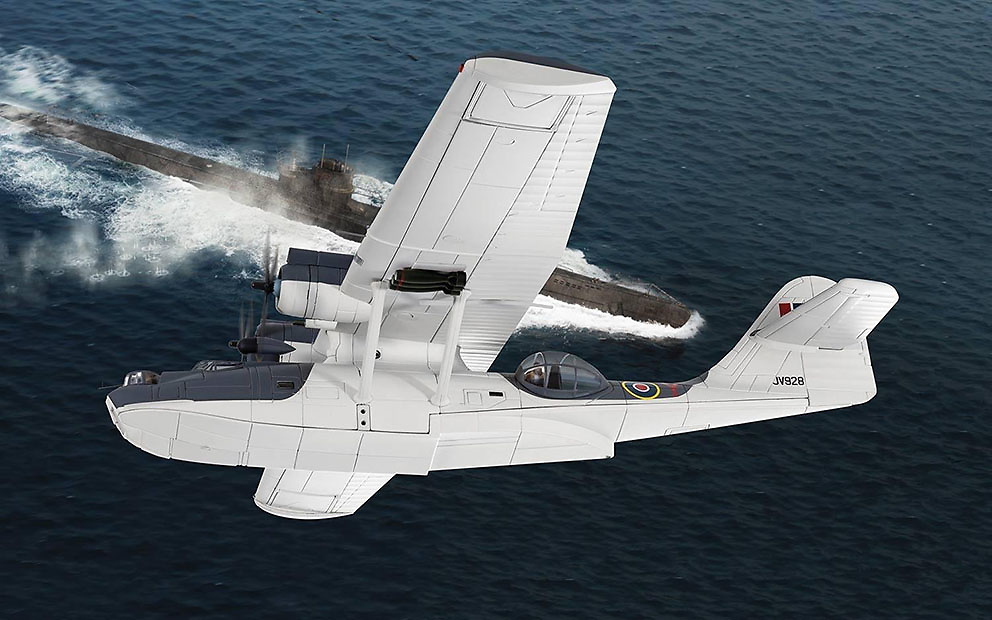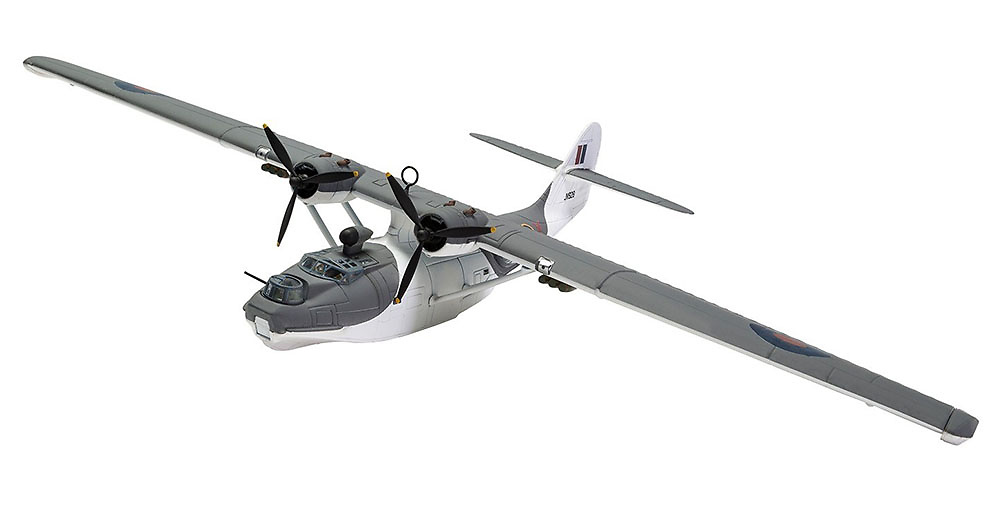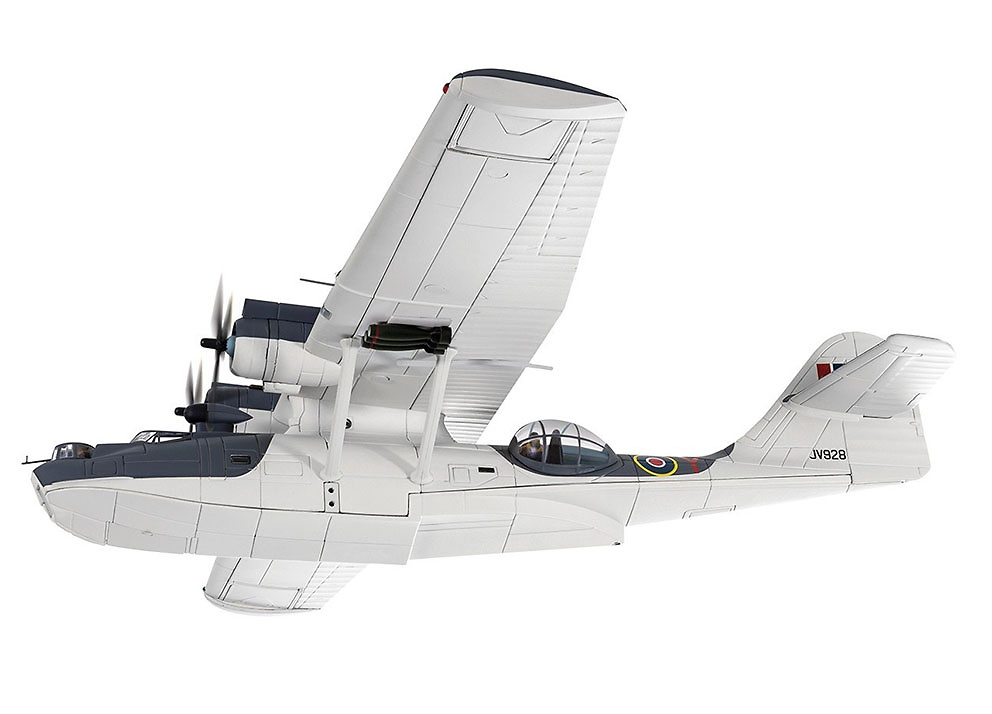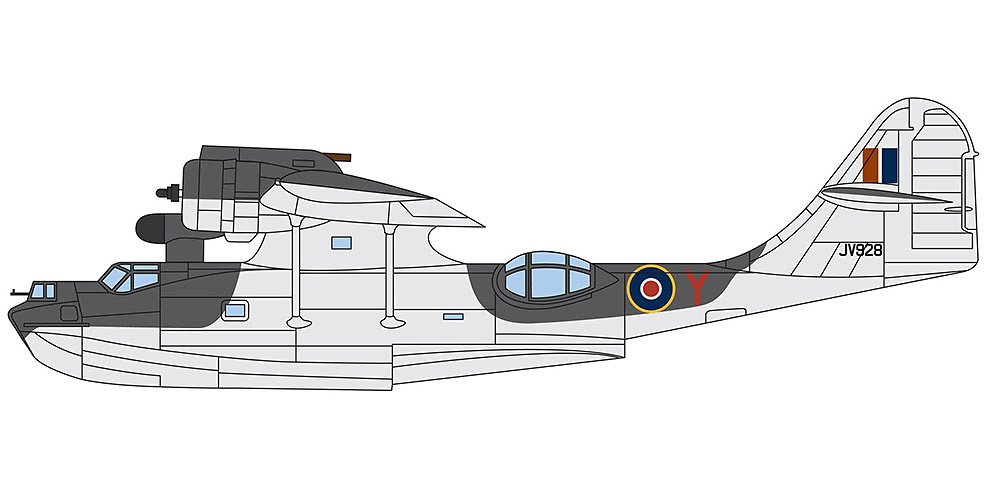Consolidated Catalina IVA JV928 'Y', Flt / Lt John A. Cruickshank, RAF No.210 Squadron, Shetland Islands, July, 1944, 1:72, Corgi
Scale, 1:72
Original ref: AA36111
Manufacturer: Corgi
Collection: The Aviation Archive
OUT OF STOCK
Uts.| Prices with VAT included | ||
We apologize for the inconvenience.
Consolidated Catalina IVA JV928 'Y', Flt / Lt John Alexander Cruickshank VC, RAF No.210 Squadron, Sullom Voe, Shetland Islands, July 17, 1944 (Sinking of U-361), 1:72, Corgi
Great Britain depended, to a large extent, on the contribution of long-range maritime patrol aircraft during the Second World War, in particular the seaplanes and the brave crews of the Coastal Command. Working alongside the powerful Short Sunderland, the American Consolidated Catalina proved to be one of the most successful aircraft of its kind, able to mount patrols that sometimes exceeded eighteen hours and more than capable of destroying any enemy ship encountered on the road. During one of these patrols on July 17, 1944, the Catalina JV928, piloted by the Scot John Cruickshank, spent five hours on a mission west of the Lofoten Islands in the Norwegian Sea, when the crew obtained a radar signal from the sea. Aware that, according to reports, the Royal Navy was in the area, the plane flew down to see it more closely, identifying the German submarine U361. Immediately he prepared to go on the offensive, Cruickshank ran a perfect attack race but the depth charges could not be released. Determined to launch his attack and with the problem of the weapon already resolved, the Catalina attempted his second attack. This time in a shower of projectiles caused multiple blows to the front of Catalina and inflicting significant injuries on the crew members, the attack caused the depth charges to unfold at exactly the right time causing the destruction of the submarine. John Cruickshank had suffered 72 injuries during the frantic attack, but despite the pain and loss of blood, he refused morphine to remain alert and help his inexperienced co-pilot to land the plane after a five-hour flight back. For this action John Cruickshank received the Victoria Cross.
Although most people consider that the Battle of Britain was the most decisive victory of the RAF in World War II, the constant struggle to protect Britain's vital sea routes against German submarines and surface assailants proved to be more decisive. It is difficult to imagine the mental and physical tension of the crews of the Coast Command aircraft, which were forced to endure arduous patrols, which often lasted many hours and had to constantly explore vast stretches of ocean, even for the least sign of activity enemy If an objective were to be presented, they would potentially have to launch an effective attack in the short term, knowing that the enemy would frantically disappear under the waves or prepare to defend themselves with every weapon at their disposal. Add to this the knowledge that they were still many miles away and several hours away from the safety of their base of operations and that they were fully exposed if the confrontation left them with damage to their aircraft, or injuries to crew members. Four brave aviators of the Coastal Command were awarded the highest prize in England for gallantry in the presence of the enemy, the Victoria Cross during World War II, but only one survived to receive the honor in person: Flight Officer John Alexander Cruickshank, Royal Air Force Volunteer Reserve, RAF No.210 Squadron.
Scale, 1:72
Manufacturer: Corgi
Original ref: AA36111
Wingspan: 43.5 cm.
Includes the figure of the pilot.
Collector's item, not recommended for children under 14 years.
Limited Edition to 1000 pieces.
Metal construction with some plastic components.
Mounted and decorated in the factory.
Realistic details, antennas, panels.
Opening canopies, detailed cockpit interiors.
Optional landing gear open / closed.
Base to show the plane "in flight".
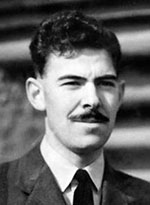 |
.. ...  |
- 06/09/2020
Catalina
Muy buen acabado
Returns
If for any reason you are not satisfied with your product purchased through the Internet, you have a period of 15 days, from the date of delivery of the product, to return it. In this case the shipping and collection costs will be borne by the customer. Before making such return, the client must contact us within the indicated period via email, telephone or fax where the return process will be indicated. Any return without this prior communication will not be accepted. To be able to accept the return must be both the product and its packaging, in perfect condition, without scratches or broken or damaged packaging and including all documentation accompanying the product and its accessories. The customer must make a proper packaging to ensure transport without damage. Once received and verified by our staff that the product is in the same state in which it was sent, the amount will be refunded according to the payment method made by the customer. Any refund will be deducted in a deduction in the amount of 8% for reception, inspection and demerit costs.

